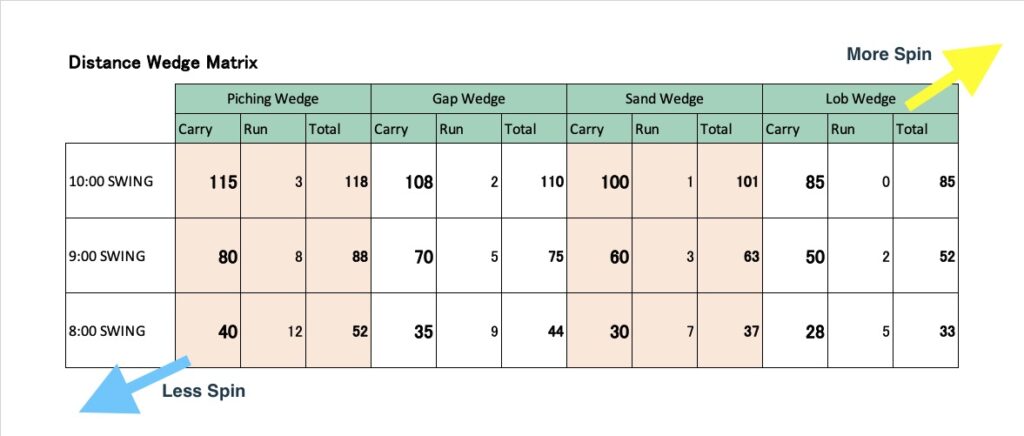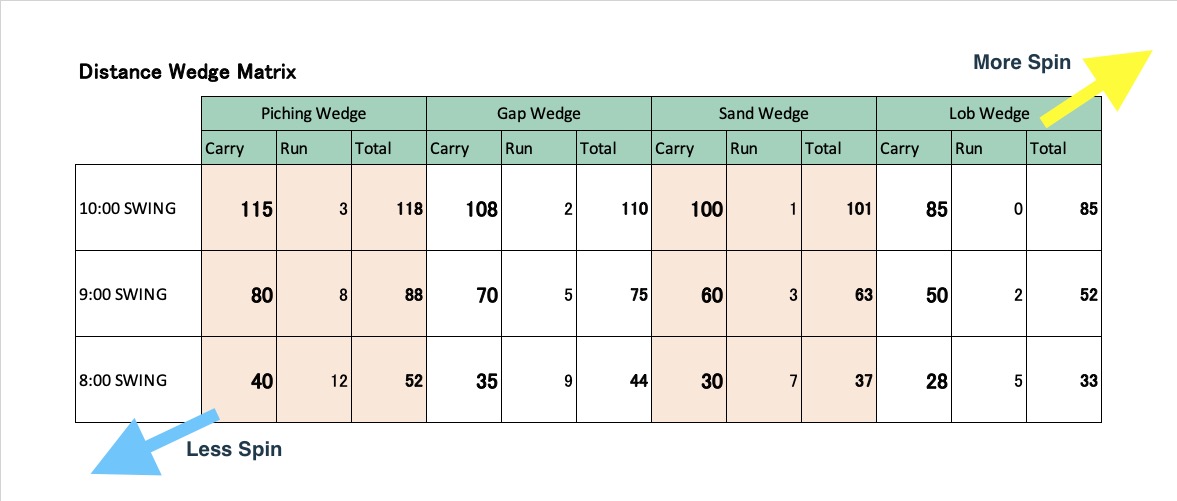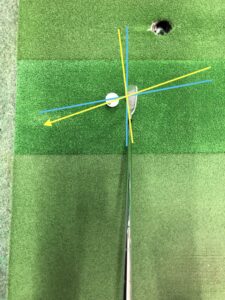It is important to have a good grasp of the 12 different carry and run distances for the pitching wedge, gap wedge, sand wedge, and lob wedge distance wedge shots at 8-4 o’clock, 9-3 o’clock, and 10-2 o’clock.
Then, record the distances in a distance wedge matrix.
As for the run, it will vary depending on the hardness of the green and the speed of the day, so it should only be mentioned for reference.
In particular, you need to remember that the largest swing (10-12 o’clock) with a lob wedge will have the most spin and the smallest swing (8-4 o’clock) with a pitching wedge will have the least spin.
You want to be able to use 12 different distances and spins depending on the course and situation.
Even if you say you have an 8-4 o’clock swing, you may not have the correct swing width, for example, if your arms are up to about 9-5 o’clock.
Take a picture of your swing width with your cell phone or other device to match your perception of your swing width with your actual swing width.
Also, if your distance varies even with the same swing width, your swing tempo may be off each time, so practice keeping your swing tempo constant.
In order to keep the swing tempo constant, imagine a One-And-Two (or Ichi-Nino-San) tempo in your pre-shot routine, and try to hit at the same tempo in your actual shot, which will reduce the variation in distance.
Here is a distance wedge matrix for your reference.

Excel template is here.
It is useful to have it saved in the cloud system in Excel online or Google Spreadsheet.
Also, your distance wedge distance may change with training.
It is a good idea to measure the distance wedge matrix every month or every three months.



Comments